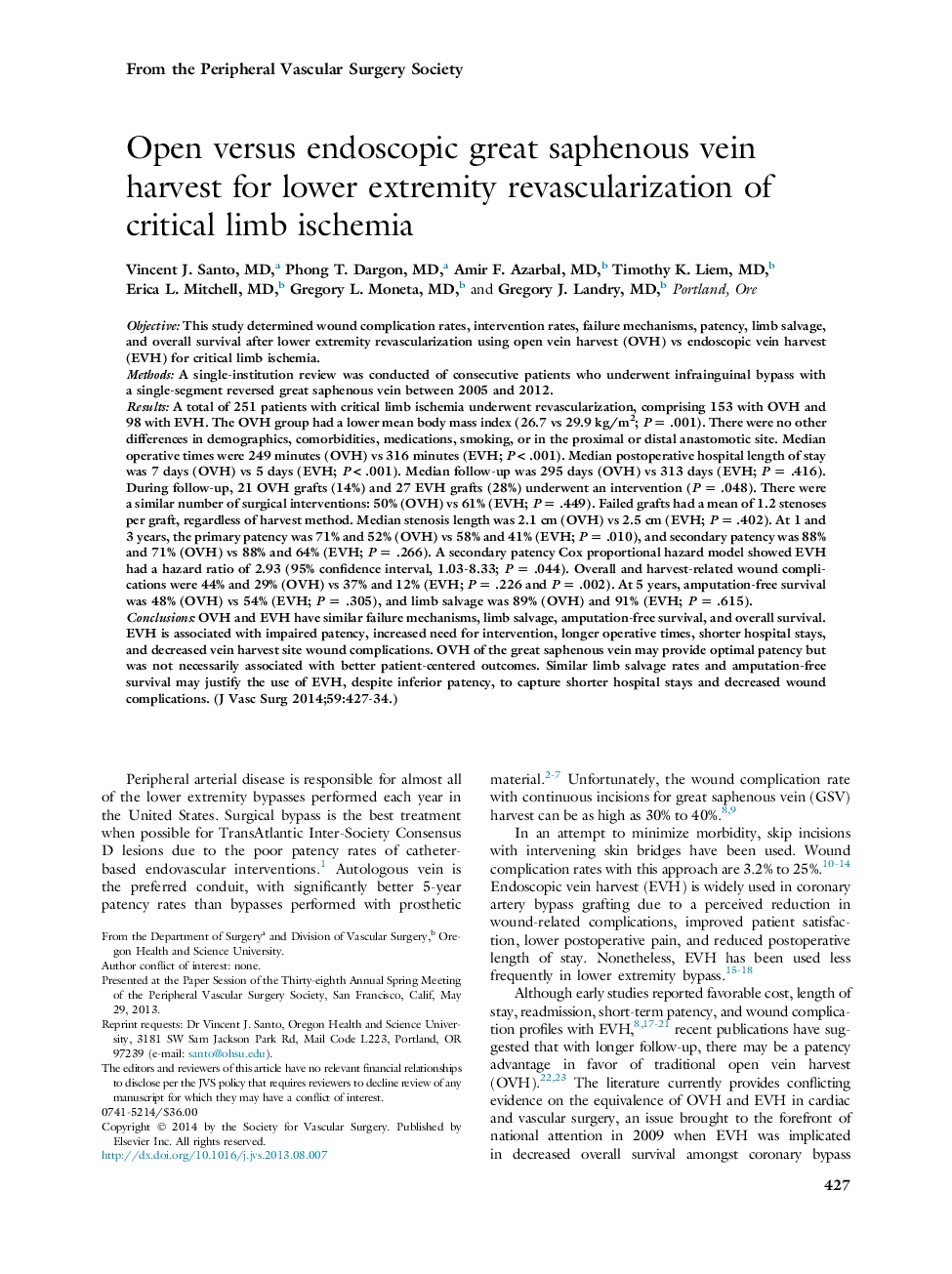| Article ID | Journal | Published Year | Pages | File Type |
|---|---|---|---|---|
| 2988934 | Journal of Vascular Surgery | 2014 | 8 Pages |
ObjectiveThis study determined wound complication rates, intervention rates, failure mechanisms, patency, limb salvage, and overall survival after lower extremity revascularization using open vein harvest (OVH) vs endoscopic vein harvest (EVH) for critical limb ischemia.MethodsA single-institution review was conducted of consecutive patients who underwent infrainguinal bypass with a single-segment reversed great saphenous vein between 2005 and 2012.ResultsA total of 251 patients with critical limb ischemia underwent revascularization, comprising 153 with OVH and 98 with EVH. The OVH group had a lower mean body mass index (26.7 vs 29.9 kg/m2; P = .001). There were no other differences in demographics, comorbidities, medications, smoking, or in the proximal or distal anastomotic site. Median operative times were 249 minutes (OVH) vs 316 minutes (EVH; P < .001). Median postoperative hospital length of stay was 7 days (OVH) vs 5 days (EVH; P < .001). Median follow-up was 295 days (OVH) vs 313 days (EVH; P = .416). During follow-up, 21 OVH grafts (14%) and 27 EVH grafts (28%) underwent an intervention (P = .048). There were a similar number of surgical interventions: 50% (OVH) vs 61% (EVH; P = .449). Failed grafts had a mean of 1.2 stenoses per graft, regardless of harvest method. Median stenosis length was 2.1 cm (OVH) vs 2.5 cm (EVH; P = .402). At 1 and 3 years, the primary patency was 71% and 52% (OVH) vs 58% and 41% (EVH; P = .010), and secondary patency was 88% and 71% (OVH) vs 88% and 64% (EVH; P = .266). A secondary patency Cox proportional hazard model showed EVH had a hazard ratio of 2.93 (95% confidence interval, 1.03-8.33; P = .044). Overall and harvest-related wound complications were 44% and 29% (OVH) vs 37% and 12% (EVH; P = .226 and P = .002). At 5 years, amputation-free survival was 48% (OVH) vs 54% (EVH; P = .305), and limb salvage was 89% (OVH) and 91% (EVH; P = .615).ConclusionsOVH and EVH have similar failure mechanisms, limb salvage, amputation-free survival, and overall survival. EVH is associated with impaired patency, increased need for intervention, longer operative times, shorter hospital stays, and decreased vein harvest site wound complications. OVH of the great saphenous vein may provide optimal patency but was not necessarily associated with better patient-centered outcomes. Similar limb salvage rates and amputation-free survival may justify the use of EVH, despite inferior patency, to capture shorter hospital stays and decreased wound complications.
